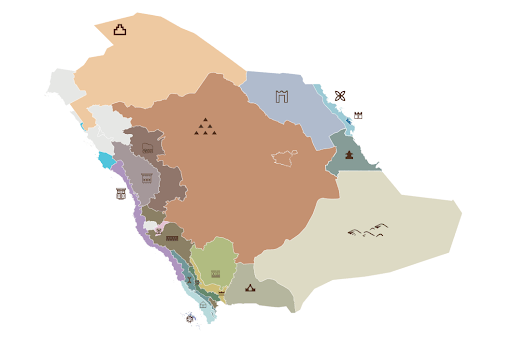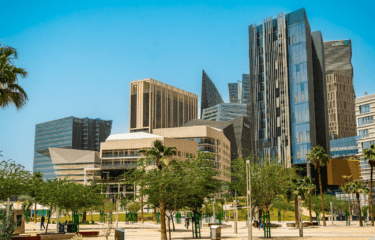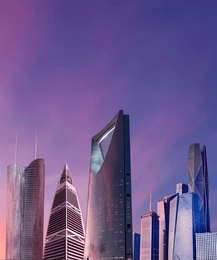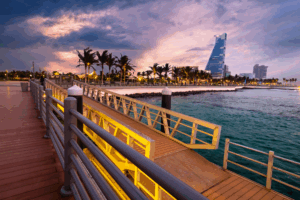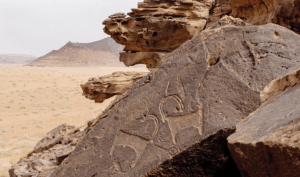Walk through any Saudi Arabian city, and you’ll find a landscape that tells a story. Towering skyscrapers stand beside ancient mudbrick homes. Intricate wooden balconies, inspired by centuries of craftsmanship, contrast with sleek glass facades. The blend of old and new is striking, but how does a nation experiencing rapid development preserve its architectural roots while embracing modernity? The answer lies in the newly launched Saudi Architecture Characters Map.
Announced by Crown Prince Mohammed bin Salman on March 16, 2025, this initiative is a bold step in safeguarding Saudi Arabia’s historic buildings and architecture. By identifying and categorizing 19 distinct architectural styles across the Kingdom, the map serves as a guide for sustainable urban development while celebrating traditional architecture in Saudi Arabia. This effort ensures that cities grow while staying true to their past, creating spaces that honor history and innovation alike.
A Vision for Saudi Arabia’s Architectural Identity
The Saudi Architecture Characters Map isn’t just a catalog of styles—it reflects the Kingdom’s rich cultural and geographical heritage. The initiative aligns closely with Saudi architectural heritage initiatives under Vision 2030, a national plan focused on economic diversification, cultural enrichment, and sustainable development.
Crown Prince Mohammed bin Salman, who chairs the Supreme Committee for Design Guidelines for Saudi Architecture, has emphasized that the Kingdom’s identity must be preserved even as its cities expand. This initiative ensures that urban spaces remain authentic, vibrant, and deeply rooted in Saudi heritage conservation projects.
It’s not just about aesthetics—it’s about shaping environments that enhance quality of life, attract tourism, and drive economic growth. By reviving traditional designs and integrating them into modern construction, Saudi Arabia is positioning itself as a global leader in architecture tourism.
Mapping 19 Distinct Saudi Architectural Styles

The Saudi Architecture Characters Map classifies 19 architectural styles based on environmental and cultural influences rather than administrative boundaries. Each region’s distinct building techniques, materials, and spatial layouts reflect the adaptations made over centuries to suit local climates and traditions.
Coastal Heritage
- Tabuk Coast, Hejazi Coast, Tuhama Coast, East Coast, and Farasan Islands showcase the influence of maritime culture. Their designs emphasize ventilation, shaded courtyards, and coral stone walls to combat humidity.
Desert & Oasis Adaptations
- Central Najdi, Northern Najdi, Eastern Najdi, Bisha Desert, and Najran feature thick mudbrick walls, minimal windows, and natural insulation techniques to withstand the harsh desert climate.
- Al-Ahsa Oasis and Al-Qatif Oasis demonstrate how architecture evolved around water sources, incorporating palm-frond roofs and shaded pathways.
Highland and Urban Styles
- Taif Highlands, Sarawat Mountains, Aseer Escarpment, and Abha Highlands showcase multi-story stone structures that maximize airflow and temperature regulation.
- Inner Madinah and Madinah Rural reveal contrasts between urban and rural architecture, blending Islamic design elements with regional materials.
These styles aren’t just historical remnants—they offer practical solutions for sustainable living. Their passive cooling techniques and locally sourced materials provide valuable lessons for modern construction.
Tradition Meets Modernity | The Three Design Typologies
Preserving heritage doesn’t mean freezing it in time. The Saudi Architecture Characters Map introduces a three-tiered approach to integrating tradition with innovation:
- Traditional Typology: Faithful recreations of historical building techniques, preserving the original form and materials.
- Transitional Typology: A balanced blend of traditional aesthetics with modern construction methods.
- Contemporary Typology: Inspired by traditional elements but adapted with modern materials and technology.
This approach allows cities to maintain their character while evolving for the future.
Implementing the Saudi Architecture Characters Map
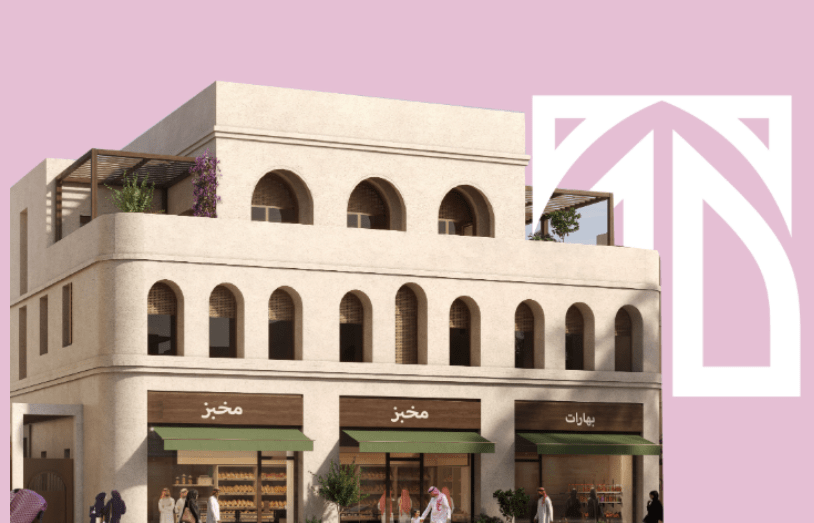
The rollout of this initiative follows a phased strategy, starting with four pilot cities: Al-Ahsa, Taif, Makkah, and Abha. These cities will serve as testing grounds where architectural guidelines will first be applied to government and commercial projects before expanding nationwide.
To ensure smooth adoption, the initiative will involve:
- Collaborations with engineering firms and real estate developers
- The establishment of engineering design studios to train local architects
- Flexible building guidelines that allow the use of local materials without excessive financial burdens
These measures guarantee that preserving cultural architecture in Saudi Arabia remains practical and accessible, rather than a costly challenge.
Economic and Cultural Impact
The Saudi Architecture Characters Map is as much about fueling progress as it is about preserving history. By 2030, the initiative is projected to contribute more than SAR 8 billion ($2.13 billion) to the economy, largely through architecture tourism in Saudi Arabia, real estate, and urban revitalization.
Job Creation & Skill Development
- Over 34,000 direct and indirect job opportunities will be generated in construction, engineering, and urban planning.
- Training programs will cultivate a new generation of architects skilled in both traditional craftsmanship and modern design.
Tourism & Urban Appeal
- Distinctive architecture enhances Saudi Arabia’s historic buildings and architecture, making cities more attractive to visitors.
- Authentic design principles will create unique urban spaces that stand out on the global stage.
Beyond numbers, this initiative fosters national pride by ensuring that Saudi citizens see their heritage reflected in the skylines of their rapidly evolving cities.
Aligning with Vision 2030 & Sustainable Development
The Saudi Architecture Characters Map supports multiple Vision Realization Programs, including:
- Quality of Life Program: Enhancing urban environments for better living experiences.
- Saudi Character Enrichment Program: Strengthening cultural identity through architectural heritage.
- Sustainability Goals: Promoting climate-responsive design by incorporating passive cooling, natural materials, and regional adaptations.
Moreover, major projects like NEOM, Diriyah Gate, and the Red Sea Project will be influenced by these architectural guidelines, ensuring that even the most futuristic developments remain authentically Saudi.
A Cityscape Rooted in Tradition and Innovation | A Legacy in the Making

As the sun sets over the Kingdom’s evolving skyline, the vision behind the Saudi Architecture Characters Map becomes clear. This initiative might seem like a set of technical guidelines, but it is much more than that. It’s a commitment to shaping the future while respecting the past.
By blending history with progress, Saudi Arabia is setting a precedent for how nations can embrace modernity without erasing their heritage. Through this initiative, Saudi heritage conservation projects will not only safeguard traditional architecture but also inspire a new generation of architects, travelers, and city planners.
The journey has just begun, but one thing is certain: the future of Saudi architecture is deeply rooted in its past, and that is something worth celebrating.
FAQs
What is the Saudi Architecture Characters Map?
The Saudi Architecture Characters Map is a national initiative that identifies and categorizes 19 architectural styles across Saudi Arabia to preserve heritage and guide sustainable urban development.
Why is preserving Saudi Arabia’s architectural heritage important?
Preserving Saudi architecture maintains cultural identity, supports tourism, and promotes sustainable building techniques that suit the country’s diverse climate and regions.
How does the Saudi Architecture Characters Map impact urban development?
It provides guidelines for integrating traditional architectural styles into modern construction, ensuring cities grow while staying true to their historical character.
Which cities will first implement the Saudi Architecture Characters Map?
The initiative will first be introduced in Al-Ahsa, Taif, Makkah, and Abha before expanding to other regions.
How does this initiative align with Vision 2030?
The Saudi Architecture Characters Map supports Vision 2030 by enhancing quality of life, boosting cultural tourism, and promoting sustainable, locally inspired urban design.

